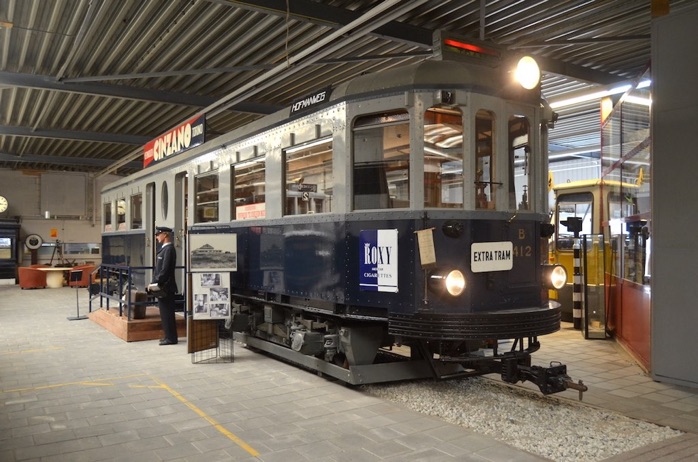THE BLUE TRAM
IN 2.5” GAUGE
By Julius de Waal

THE BLUE TRAM
IN 2.5” GAUGE
By Julius de Waal

With renewed interest in modelling trams, Julius de Waal gives his interpretation of the famous Blauwe Tram from the Netherlands in 2.5” (64mm) gauge. Versions in other gauges will be published later.
Blauwe Tram is the collective name in the Netherlands for the trams that ran between 1881 and 1961 in the area between Scheveningen, The Hague, Leiden, Katwijk, Noordwijk, Haarlem, Zandvoort, Amsterdam, Purmerend , Edam and Volendam. From 1924 the trams were painted a dark blue.
Several long-distance steam and electric tram lines were combined in 1911 and operated by the North South Holland Tramway Company (NZHTM) or, for short, NZH. In 1946, all of the companies involved were transferred to the Electric Railway Company (ESM).
The tram company had two gauges. The metre gauge was only found in North Holland, while South Holland (and North Holland from Haarlem south) the trams were standard gauge. The electric company had two different voltages. Standard gauge had 1200 volts, and the metre gauge 600 volts.
Between The Hague and Leiden were two tramlines. The Blue Tram drove through Voorburg, Veur/Leidschendam and Voorschoten. The Yellow Tram drove from The Hague to Leiden via Wassenaar. With a final acquisition in, 1932 the network of the Blue Tram reached its maximum size of 143 kilometres.
In the days after the Occupation car ownership increased and trams were increasingly seen as an obstacle to traffic. In the 1950s it was the NZH policy to replace streetcars with buses, which were more agile and cheaper to run. One by one the lines of the Blue Tram vanished. The busiest line Amsterdam - Haarlem - Zandvoort, ended on 31 August 1957. On 9 November 1961, the last tram drove from the Hague to Leiden.
Some 350 Blue Trams were built and seven are preserved, three in the care of the Tramway Foundation in Scheveningen and four in the NZH Public Transport Museum in Haarlem.
Click on drawings to download - for personal use only.
